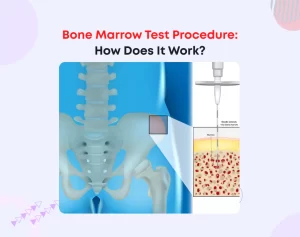
Aplastic Anemia: Causes, Diagnosis, and Evolving Treatment Strategies
Aplastic anaemia is a violation of the function of hematopoiesis of the bone marrow, leading to a decrease in the number of all blood elements, such as red and white blood cells, as well as platelets.
Marrow aplasia is thus a kind of bone marrow failure. If untreated, aplastic anaemia can lead to serious problems such as irregular heartbeats (arrhythmia) and heart failure. Continue reading to discover more about this illness’s history, diagnosis, and treatment options. Because aplastic anaemia has a large impact, it is vital to comprehend its different manifestations.
What is aplastic anaemia?
Aplastic anaemia, also called bone marrow aplasia (aplasia is the failure or reduced development of a tissue or an organ), is a bone marrow disease characterized by the simultaneous reduction in the number of:
- Red blood cells ;
- White blood cells ;
- Platelets.
The reduction in the number of all blood cell components is called pancytopenia, and this can occur owing to issues with stem cells in the bone marrow and their capacity to develop. The disease’s progression involves three major processes that cause bone marrow deficiency:
- Decline in the ability of hematopoietic stem cells to develop and differentiate;
- Changes in the chemical environment and the interactions between different cell lines inside the bone marrow;
- A rise in inhibitory immune chemicals, including interferon and TNF (which might cause apoptosis in the bone marrow).
Aplastic anaemia is a relatively rare condition but is most commonly seen in adolescents and young adults. Inadequately treated severe disease leads to a fatal outcome in most cases. The milder cases, on the other hand, mostly have a positive outcome.
Recurrences of the disease are quite common, which is why regular medical check-ups are necessary.
Types of aplastic anemia
Aplastic anaemia is categorized into two types:
Congenital or hereditary aplastic anaemia
Inherited aplastic anaemia is caused by genetic abnormalities and is commonly encountered in children. This kind generally affects children and young adults. If you have this kind, you are more likely to develop leukaemia and other malignancies. It’s essential to see a professional on a frequent basis to keep safe. Fanconi anaemia, dyskeratosis congenital, and Blackfan-Diamond syndrome are some forms of congenital aplastic anaemia.
Acquired aplastic anaemia
Aplastic anaemia is mainly acquired in adults. Scientists believe that something is causing the immune system to malfunction. Aplastic anaemia is classified into two types:
- Idiopathic aplastic anaemia, which has no known aetiology;
- And secondary aplastic anaemia, which is caused by another illness.
Causes of aplastic anemia
Aplastic anaemia causes can be divided into inherited and acquired variables. A variety of causes can lead to acquired cases:
- Toxic Substances: Certain medications and chemicals, such as tolbutamide, phenylbutazone, and pesticides, can cause aplastic anaemia, especially in people who are predisposed to the development of this pathology;
- Radiation and Chemotherapy: Ionizing radiation and chemotherapy are two possible causes.
- Infections: Severe viral infections such as Hepatitis B, Hepatitis C, Parvovirus B19, Epstein-Barr virus, cytomegalovirus, and HIV have been linked to the development of aplastic anaemia.
- Pregnancy, autoimmune diseases, and myelodysplastic syndromes can all play a role in its emergence.
Symptoms of aplastic anemia
Aplastic anaemia can arise suddenly or gradually, causing different symptoms in severity. Despite the varying severity, the symptoms are common and caused by the reduction of the cellular elements of the bone marrow:
- Anaemia (lack of red blood cells) causes pallor, tiredness, general malaise, dizziness, headache, and arrhythmias;
- Leukopenia ( lack of white blood cells) causes an increase in infections, especially by opportunistic pathogens, which can become recurrent;
- Thrombocytopenia (platelet deficiency) causes petechiae, nosebleeds, and bleeding from the gums or other tissue.
Other symptoms that may be associated are:
- nausea;
- skin rashes.
Diagnosis of aplastic anemia
The diagnosis of aplastic anaemia is made on the basis of multiple factors:
- medical history;
- blood count, electrolyte, iron, vitamin B12, folic acid and liver enzyme measurements;
- Bone marrow biopsy or aspiration.
- Blood tests allow you to rule out other types of anaemia before proceeding with bone marrow aspiration. Vitamin B12 and folate deficiency, for example, are not responsible for aplastic but macrocytic anaemia.
Progressive Treatment Approaches for Aplastic Anemia
Multiple treatment options cater to aplastic anaemia, including:
- discontinuation of the drug or elimination of contact with the toxic substance that caused the aplastic anaemia;
- supportive care with blood transfusions to reduce anaemia and thrombocytopenia;
- intravenous antibiotic therapy, appropriate to resolve infections from opportunistic pathogens;
- immunosuppressive therapy ;
- bone marrow transplant.
Severe aplastic anemia: What to do
Transfusions represent the best supportive therapeutic strategy, especially in cases of emergency, to prevent heavy bleeding. However, to resolve the production defect of mature hematopoietic cells, the therapeutic options are represented by:
- immunosuppressive therapy;
- bone marrow transplant.
For those under the age of 20, utilizing someone else’s bone marrow for transplant is the greatest option since it provides the best chance of survival. Another approach, immune system weakening therapy, is appropriate for those who do not have a matched donor. Whether it’s a bone marrow transplant or an immune system-suppressing medication, over 70% of patients live for 5 years. Risks associated with severe aplastic anaemia include myelodysplastic syndromes and leukaemia.
In Conclusion
Finally, aplastic anaemia is a rare and complex blood condition. It is characterized by a simultaneous decrease in red and white blood cells, as well as platelets, leading to pancytopenia. The causes of this disease range from problems with blood-forming stem cells to changes in the bone marrow environment and increased immune-inhibiting chemicals. This illness is classified as either being present at birth or developing later in life, with causes ranging from hereditary features to toxic chemicals, infections, immune system abnormalities, pregnancy, and other circumstances.
A thorough medical history review, extensive blood testing, and a precise bone marrow sample are all required for an accurate diagnosis of aplastic anaemia. The intensity of symptoms varies, culminating in weariness from anaemia, increased susceptibility to infections, and a proclivity to bleed. The array of treatment options includes quitting hazardous medications, blood transfusions, antibiotic regimens, immunosuppressive medicines, and possibly life-saving bone marrow transplants, especially in severe instances.






